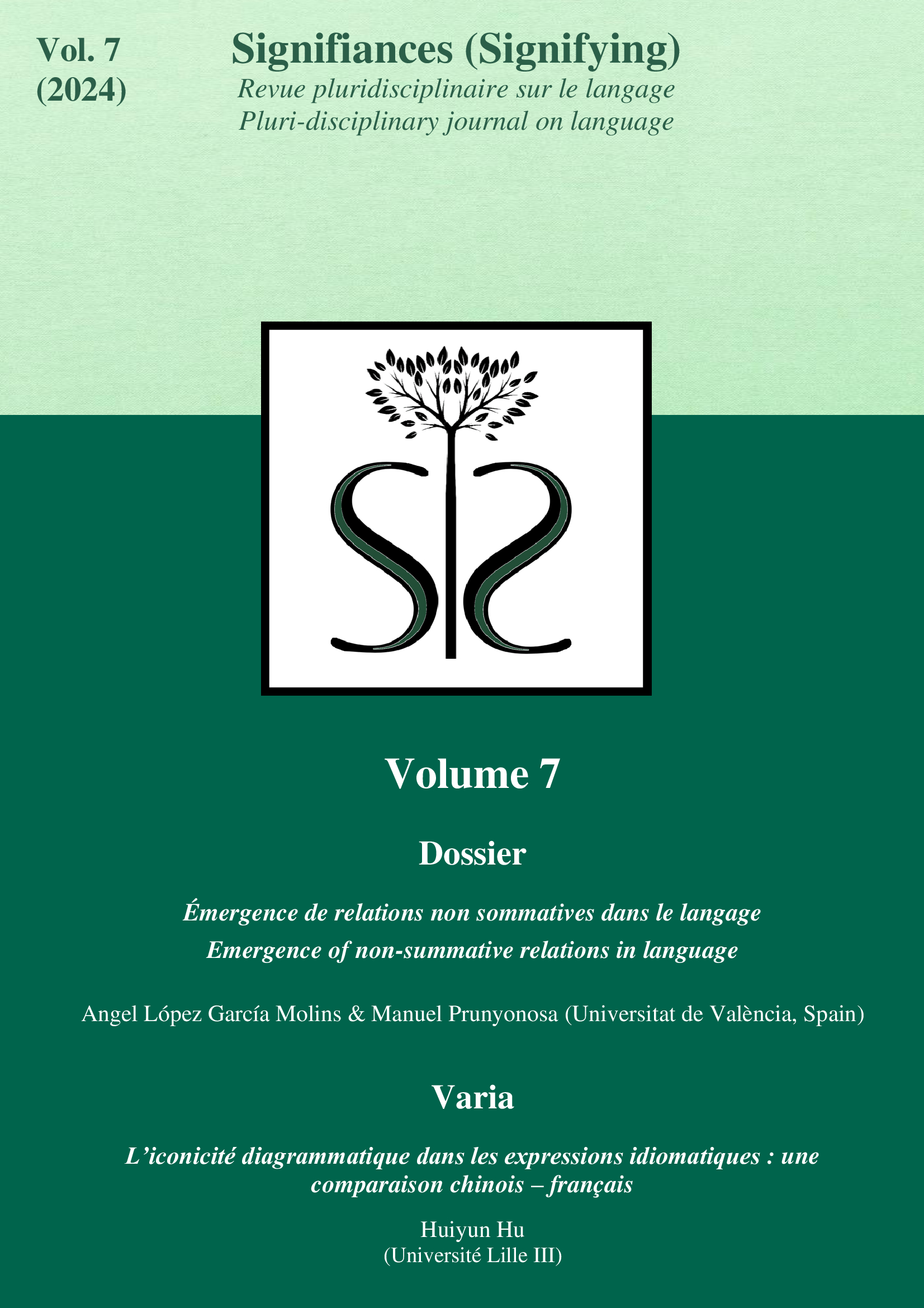Emergence of non-summative relations in language
DOI:
https://doi.org/10.52497/signifiances.v7i1.359Abstract
The appearance of signs is linked to the relationship of a form, which in itself has no semantic value, with a content, to which it is linked by convention. From this result two strong assertions: 1) that the signifier (the form) and the signified (the content) are the two sides of the sign; 2) that the union of the signifier and the signified is arbitrary; a corollary of 1) and 2) is that on both levels new units are produced from the addition of smaller units. Since F. de Saussure formulated this definition of the sign, descriptively easy to manipulate, linguistics has been confirming that there is something more. It consists of non-summative transversal relations, which occur at all levels (words whose meaning leads to other words, phonemes that sound like other phonemes in the chain, etc.). These relations are enactive, they result from the mutual determination of language and world.


